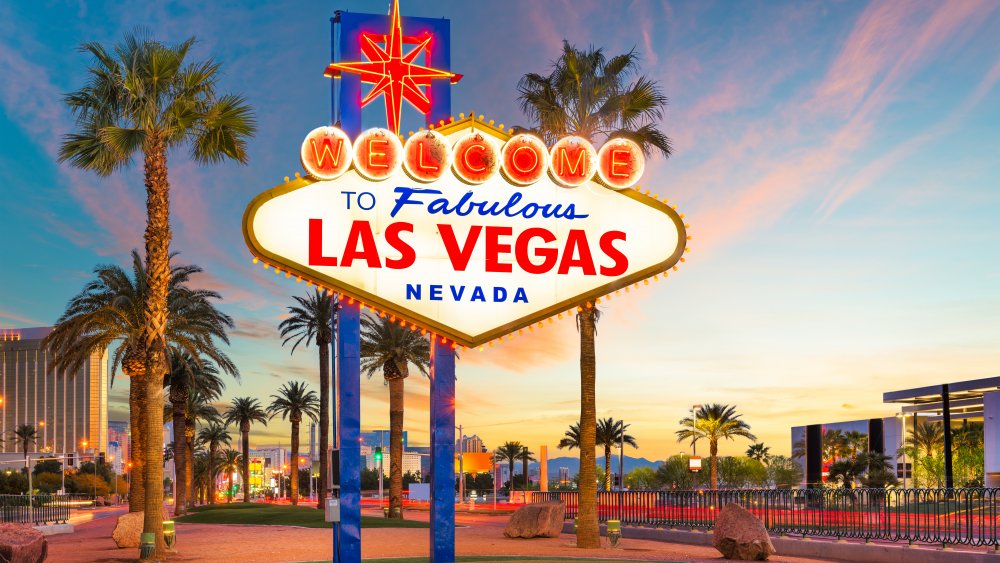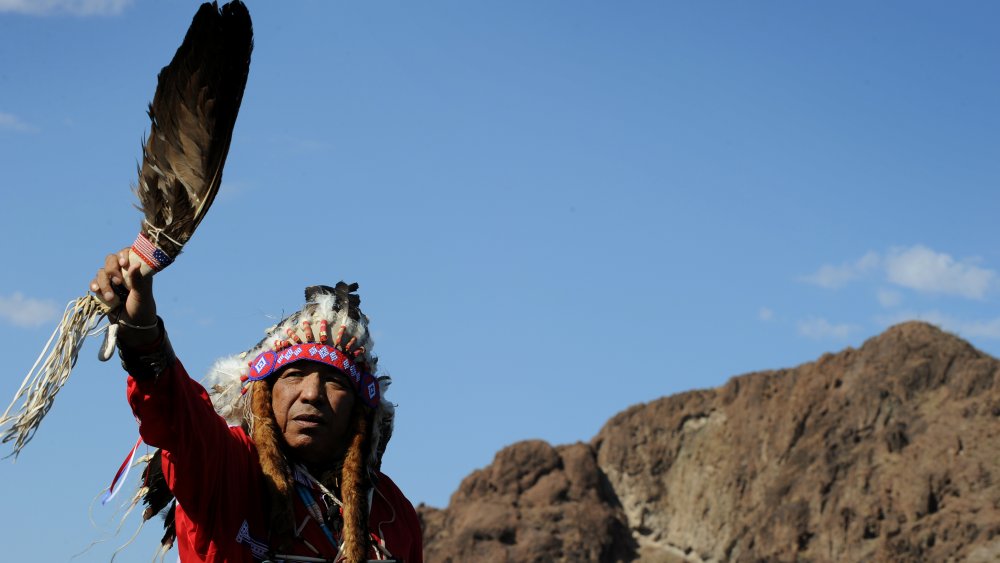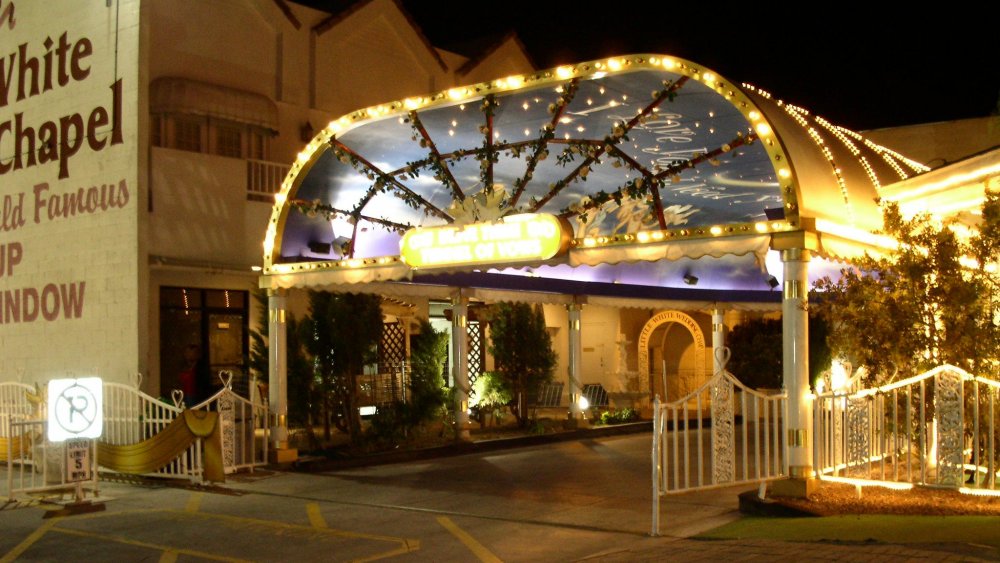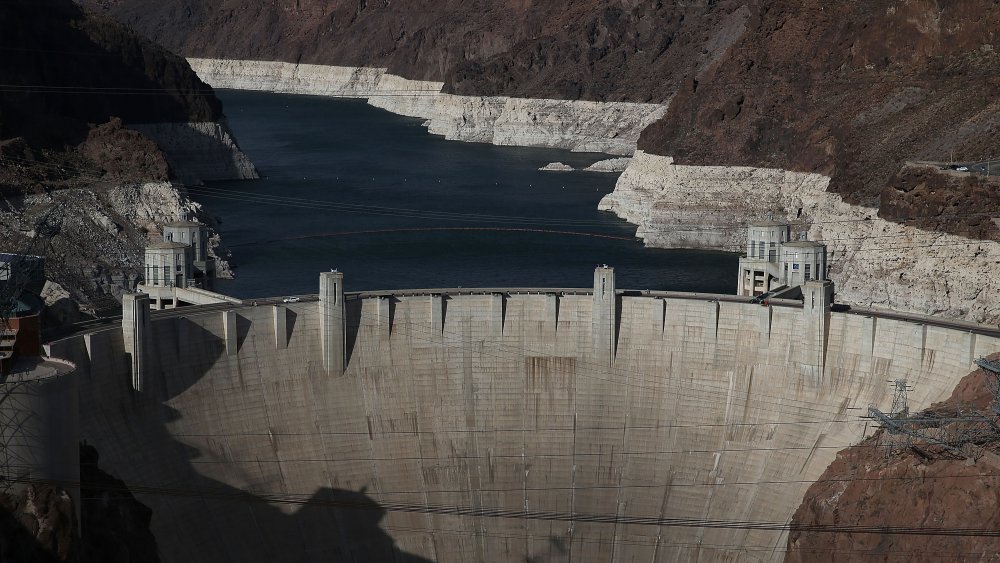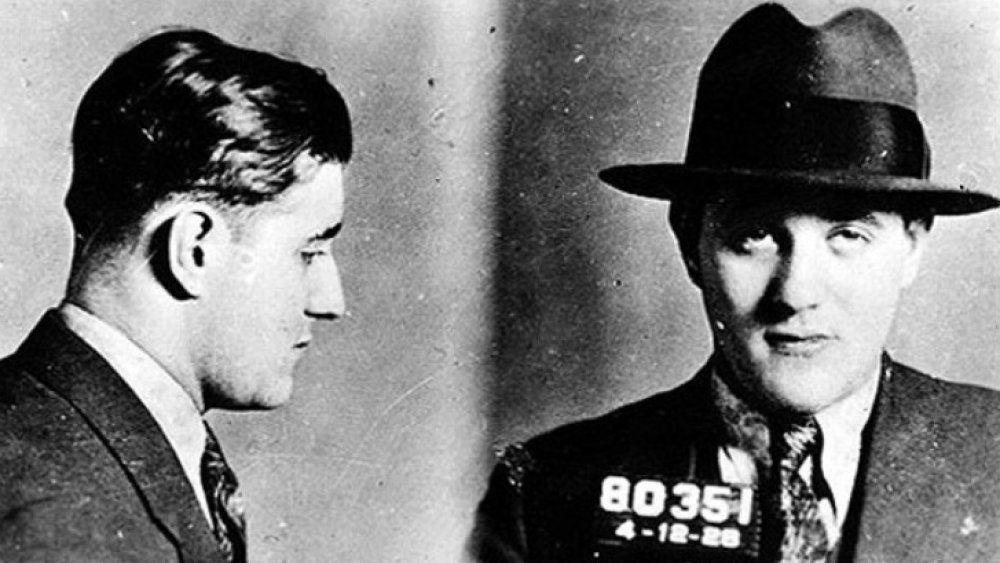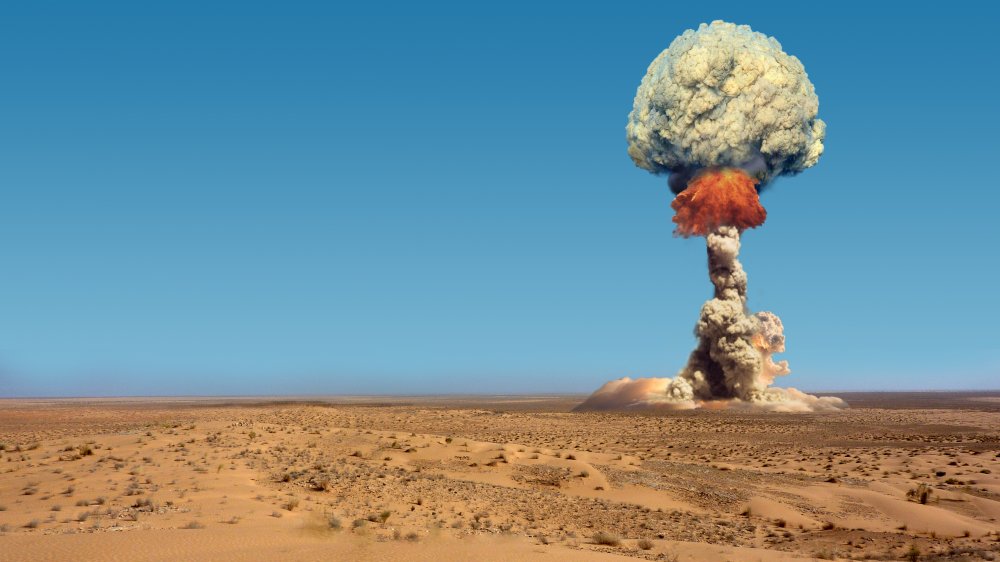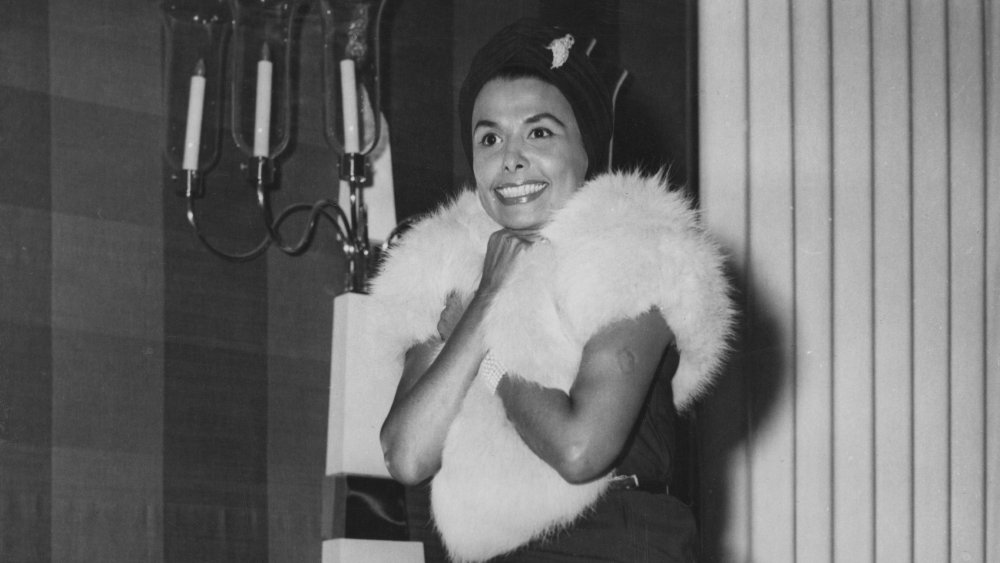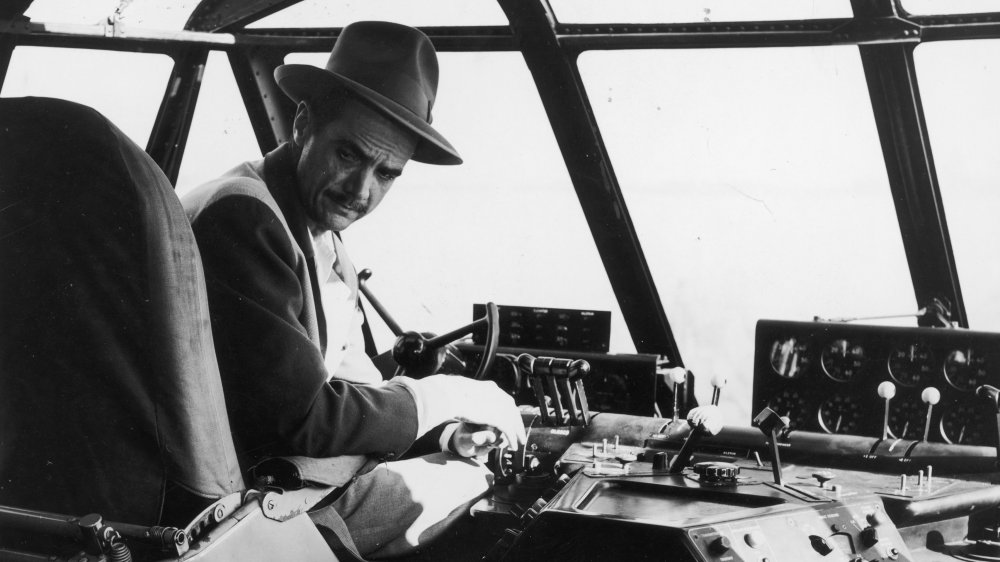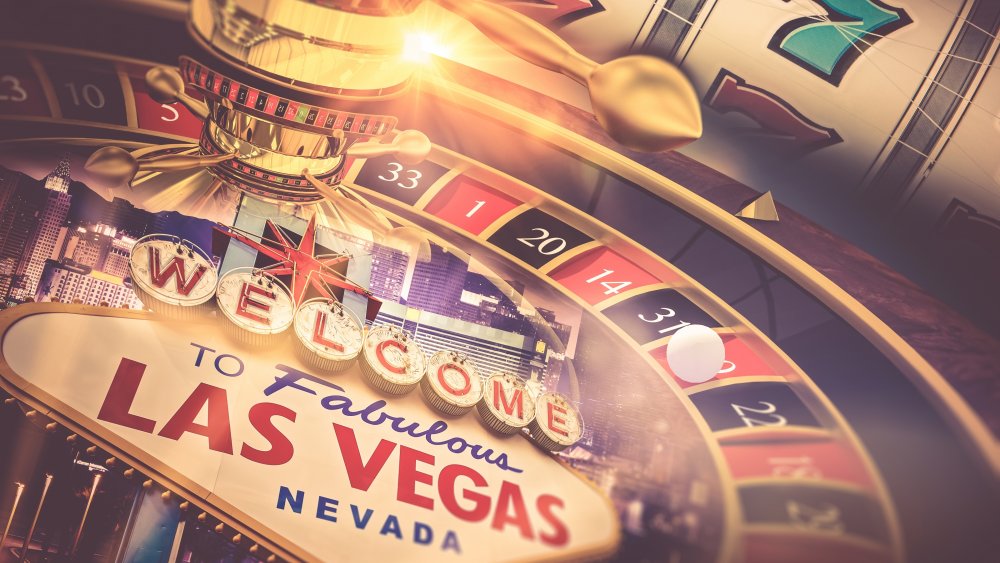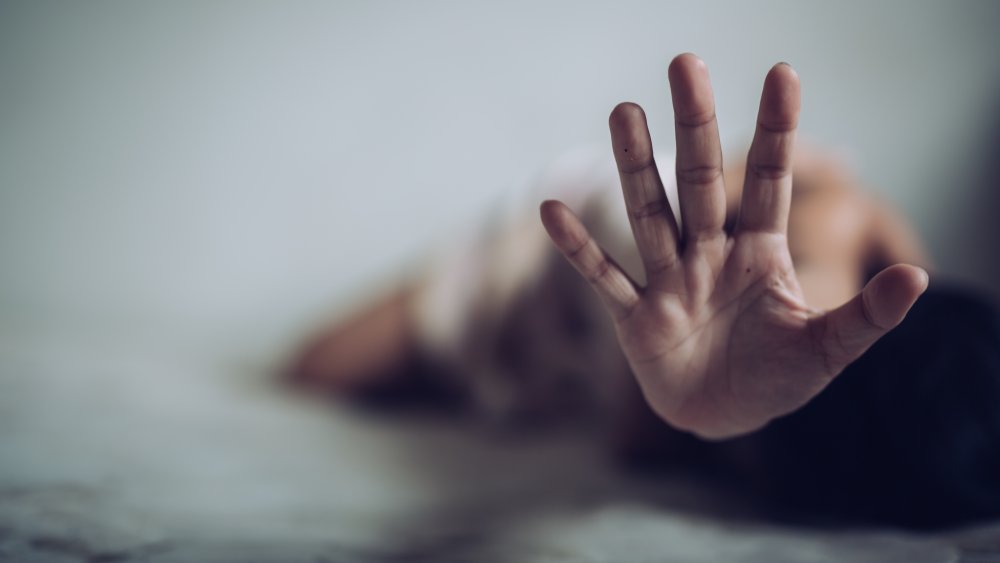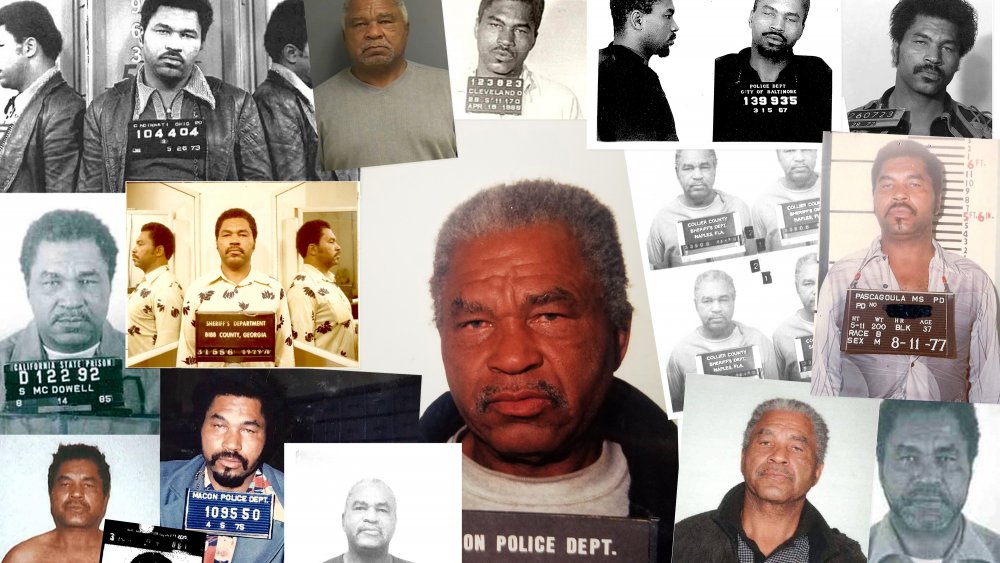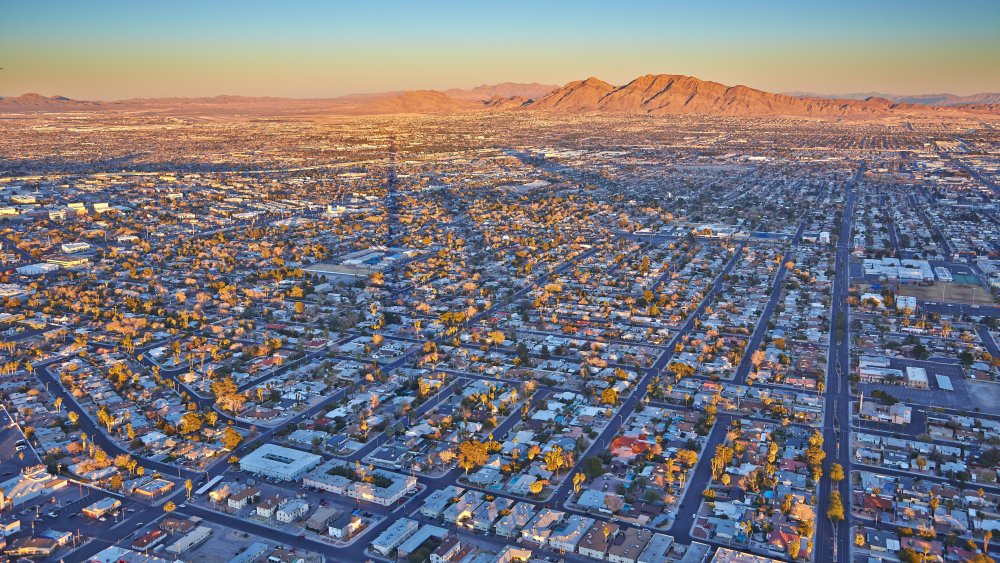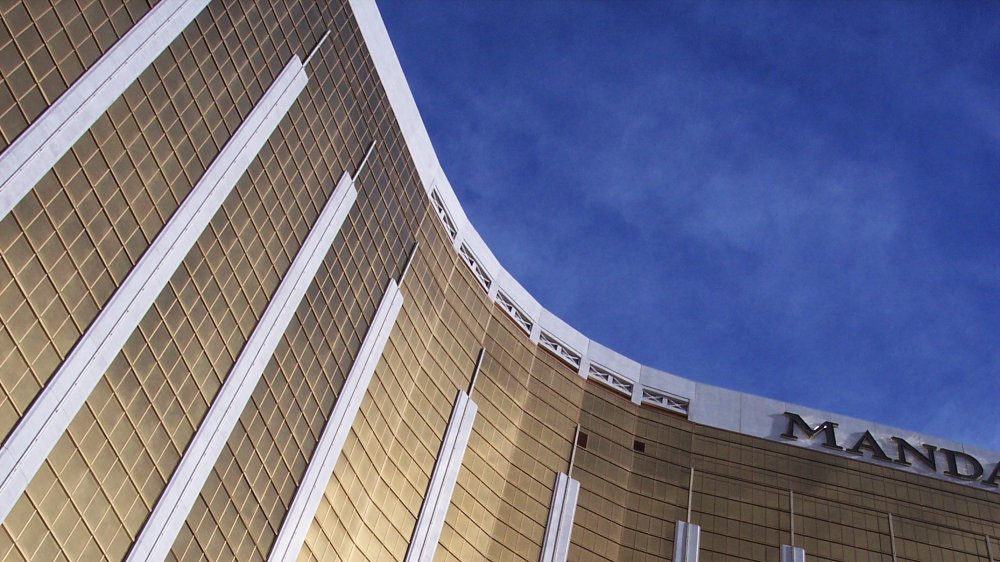The Tragic History Of Las Vegas
Anyone who's spent some serious time in Las Vegas seems to have their own tales of woe, whether it was the time too much money somehow got spent at the craps table or that time with the tiger and the ... never mind. The old adage "what happens in Vegas, stays in Vegas" sums up the very aura of the city. You might be free to do what you want, but sometimes, it's not as nice as one might expect.
And that's certainly true for the city's history, which isn't entirely pleasant, as Vegas' reputation as Sin City extends to its own backstory. There are a lot of skeletons buried in the city's closet, and while many might have an inkling this is going to have something to do with organized crime, that's not all that's lurking in Vegas's shady past. How about the surprising tale of segregation and the less-than-honorable reason for ending it? Or that whole human trafficking thing? Or let's just say Fallout: New Vegas was almost based on a real story. Yep, we're going to talk about that as we dig into the tragic history of Las Vegas.
The original occupants of Las Vegas are confined to a 31-acre reservation
The only reason we can tolerate the harsh climate of Las Vegas is because of things like air conditioning and frozen drinks, but when the Southern Paiute originally settled there, they had no such things. And they've been living there since somewhere around 1100, and they're one of four Native American tribes that call Nevada home.
According to Culture Trip, the Southern Paiute were historically peaceful, known for their incredible skill at making intricately woven baskets. Their first encounter with European settlers was in 1776, and throughout the late 1800s, they found themselves losing more and more of their land — mostly to those looking to stake a claim on a silver mine and to Mormon settlers looking for a new home. Then, disease and violence took its toll.
Today, the Southern Paiutes who remain around Sin City live on a 31-acre plot of land just north of downtown Las Vegas. The group of buildings they call "the Colony" includes a community hall, cemetery, health clinic, and police department, and it sits on land that a Las Vegas ranch owner deeded to them in 1911. Most of the land they'd lived on had already been claimed by settlers, and it wasn't until 1970 that they were recognized as a sovereign nation (via the Las Vegas Sun). As of 2015, there were 56 Las Vegas Paiutes left.
There's a lot of divorce happening in Sin City
So here's the thing about building a city in the middle of a hot, arid, desert: You need to figure out a way to actually get people out there, and that's how it became a sort of desert oasis where you could go to do and experience all the things that regular, polite society frowned upon. And in the early days of Vegas, that included getting married quickly.
In the early 20th century, lawmakers in Nevada realized they could take advantage of young idiots so in love they couldn't bear to wait the normal three days it took to get a marriage license in most states. So, they waived the wait, and even into the 21st century, it's still one of America's favorite cities for a destination wedding. But they didn't just use weddings to get people in the door but divorces, too.
According to the University of Nevada, Las Vegas, the lenient divorce laws meant that so many people temporarily moved to the state that divorce numbers in the US were horribly skewed. It's still one of the number one places to get divorced, and according to the Las Vegas Advisor, both Reno and Vegas were built on the happy tears of marriage and sometimes the even happier tears of divorce. That's heartbreaking stuff.
The tragic father-and-son deaths on the Hoover Dam
Without the Hoover Dam, there may have been no Las Vegas. According to the Online Nevada Encyclopedia, there were just over 5,000 residents in 1930. But when Hoover Dam was built, Vegas wasn't just home to the work crews, it was a base for the flocks of tourists who came to see this marvel of modern engineering. Once it was complete, the regular water supply allowed the town to grow, but often-overlooked is the tragic — albeit unlikely — tale of two deaths.
The first happened on December 20, 1921. John Gregory Tierney was part of a crew surveying for the dam project, and he was killed in a flash flood. He was the first casualty on the project, and the last would be his son — also on a December 20, 14 years later.
Patrick William Tierney was John Tierney's only son, says the Las Vegas Review-Journal. He'd been 12 when his father died, and even though he and his mother moved away to Missouri, he ended up heading back to Hoover Dam in desperate need of work. It was the Great Depression, after all, and he had his own family to support. In spite of his mother's misgivings, he took a job there. His body was ultimately recovered after he fell from an intake tower, while his father's was never found.
How Bugsy Siegel built Las Vegas
Everyone knows the popular story. Mafia heavyweight Bugsy Siegel saw an opportunity in Vegas, headed there, and started pouring the mob's hard-earned cash into building what we now know as the Las Vegas Strip. He was a visionary, he saw a city of sin that was a haven for his kind of people ... only that's not what happened at all.
According to the Online Nevada Encyclopedia, the development of Las Vegas' casinos came in 1931, when the state legalized gambling. Casinos were built for the workers on the dam, but once tourists started coming — and by 1934, 300,000 people visited the young Sin City — there was no looking back. In other words, there were already fancy hotels and casinos before Siegel came along and built his famous resort, the Flamingo. So where does Siegel enter the picture? Well, he did invest mob money into the Flamingo, but according to History, what he really did to make the area famous was to die.
According to The Mob Museum, it was 1947, and Siegel was sitting in his girlfriend's house with fellow Flamingo investor Allen Smiley when he was hit with fire from a .30-caliber sniper rifle. There are a ton of theories about whodunit, but the case was never solved. Couple that sensational story with the equally sensational new Vegas, and who could resist? After all, if there's one thing tourists like better than a good murder story, it's a good mystery. The rest, as they say, it history.
Fallout: Las Vegas
The 1950s were a strange time. More and more people were coming to Las Vegas, and starting in 1951, there was the chance to see a real atomic blast, up close and personal.
The Nevada Test Site was just north of the city, and it was the north-facing rooms of the former Desert Inn Hotel and Binion's Horseshoe Hotel that were among the best for bomb-watching. But Roadtrippers says you didn't even need to book a room. You could be strolling down the strip and catch a glimpse of mushroom clouds on the horizon. PBS says Vegas marketed itself as Atomic City, and if you're wondering whether or not people packed "atomic box lunches" so they could head into the desert and picnic as close to the site as they could, the answer is yes. Yes, they did.
Throughout the decade, Vegas continued to advertised itself as the best place to go, relax, and see some atom bombs go off just a stone's throw away (or 65 miles, to be exact), in places like the Sedan Crater — which is still low-level radioactive. Atomic tourism was big stuff, and there was themed everything, from beauty pageants to parties. The best viewing dates and times were posted in calendars that were super handy for visitors but probably less handy for the military. According to the Atomic Heritage Foundation, the whole test site thing became hugely controversial after it was declassified.
Desegregation happened thanks to the mob
Even as Bugsy Siegel was opening his fantastic Flamingo, Las Vegas was, well ... Smithsonian describes it as a sort of "Sin Village." But even as customers started to come to casinos like the Sahara and the Sands, Jim Crow laws ensured those customers were white, and even headlining black entertainers like Ella Fitzgerald and Nat King Cole were restricted to the kitchen entrance and a boarding house on the Westside, the only place they could rent a room.
Singer Lena Horne (pictured) was something of an exception. She had the admiration of Bugsy Siegel, but even when she checked out of a room, all her linens were burned by hotel staff. However, Siegel's influence helped give her the clout she needed to stipulate in her contract that anyone — regardless of skin color — was allowed to buy tickets to her shows, and the outrage was real, even though segregation had already been outlawed. Technically, at least.
Then, in 1955, a group of businessmen opened the Moulin Rouge, advertised as "America's First Interracial Hotel." The opening was impressive and even more importantly, their main attraction stunned crowds. Led by dancer Dee Dee Jasmin, 23 chorus girls and 12 male dancers performed a choreographed floor show that ended with a dance that would become infamous: the Tropi Can Can. While the businessmen saw dollars, those who had predicted the whole thing would end with riots had been sorely mistaken.
Howard Hughes had quite the vision for Vegas
If Howard Hughes had seen his vision for Vegas realized, things would've been very different. And better.
After using the city for a movie in 1952, he returned in 1966. But according to the University of Nevada, Las Vegas, he could never quite come to grips with what had changed. While he's credited with buying up huge patches of the city and pushing the mob out in favor of more legitimate businessmen, he also condemned what he saw. Vegas, he wrote, shouldn't be allowed to "degrade into a freak or amusement park category, like Coney Island." He condemned the idea of things like outdoor water attractions, lamenting the presence of mosquitoes and the smell of stagnant water.
We all know that Vegas turned into a sort of Coney Island on steroids, so what did we miss out on? According to The New York Times, Hughes had other plans. He wanted to make Las Vegas a major hub of a high-speed train line, and he wanted to clean up the city and make it high-class. And perhaps best of all, Circus Circus would have been gone a long time ago. As Hughes wrote, "The aspect [...] that has me disturbed is the [...] Carnival Freaks and Animal side of it." Sure, he may have disapproved because of the dirt and the smell, but Vegas could've had a little less cruelty if Hughes had had his way.
It's long been the suicide capital of the world
Vegas might be all glitz and glamour at a glance, but you just have to walk down the Strip and take a big, deep breath, and you'll smell that seedy underbelly. There's a dark side to Vegas, and for a long time, it's been the suicide capital of the world.
According to NPR, the odds of any person taking their own life in Vegas are about twice what they are in any other city. There's an average of one suicide per day, and when sociologist Matt Wray of Temple University compiled a huge amount of information on deaths and suicides across the country, he found it's always been like that. In 30 years, there's been around 600,000 suicides in Vegas, give or take.
He also found that if Las Vegas residents left the city for any amount of time, their risk of suicide decreased. On the flip side, all of those 40 million-odd visitors? They had a higher risk of suicide than any of the residents. So, why is this? Morton Silverman, a researcher from the University of Chicago, suggests it's people who are predisposed to suicide who often choose to live in or visit Vegas. And in case you're wondering, Vegas country coroner Mike Murphy says that in his experience, Vegas suicides aren't in response to what happened there — they happen after people decide to make Sin City their last hurrah.
It's high on the list when it comes to human trafficking
Everyone knows Vegas has a seedy underbelly, but it's more horrible than most can imagine. According to the UNLV Center for Crime and Justice Policy, Nevada as a whole has a higher proportion of sex trafficking victims than the national average, and the next time you're there, really look at some of the billboards and posters you see. Many belong to a campaign to raise awareness of the human trafficking that goes through the city, and oh, it gets worse.
The FBI (via Impact Nevada) has identified Las Vegas as one of the country's "high intensity child prostitution areas," and we did say it was going to get worse. In 2017, there were an estimate 5,687 victims of the child sex trafficking trade in Nevada alone, and we say "estimated" because only about .04 percent of human trafficking victims are ever identified. Given that there are anywhere from 20 to 40 million of these victims across the globe, well, you do the math.
Why Las Vegas? Al Jazeera talked to some of the survivors and found that many were runaways — oftentimes kids who'd gotten lost in the foster system — who headed west looking for a fresh start. A culture of secrecy and "acceptable" illegal behavior, coupled with a massive homeless crisis, makes Vegas the perfect place for traffickers to prey on vulnerable teens.
Las Vegas was the hunting ground of a notorious serial killer
According to an FBI report released in early 2019 (via ABC Las Vegas), 2018 had brought with it a jump in Vegas crime. But surprisingly (and yes, that's incredibly jaded to say "surprisingly"), there were only four murders there in 2017 and four in 2018. That's way less than you'll find in the world's most violent cities, but we'd be remiss if we didn't mention Samuel Little.
The most prolific serial killer in US history, Little has confessed to murdering 93 people between 1970 and 2005, and 50 have already been confirmed by law enforcement. Tragically, one of those confessions was of the murder of a Las Vegas woman he described as "kinda thin, dark-skinned. About 40 years old." As he explained, "She's out there hustling. I think she was a drug addict because she wouldn't been out there."
And the rest of the confession is eerie. There's no detail, no relishing in the memories of the case, just a matter-of-fact statement, with Little saying, "I was headed toward California. So as I drove out of Las Vegas ... I seen a motel ... and a lot of bushes. That's where I dropped her ... and she rolled." And that's it — just the cold, terrifying description of the end of a human life.
It's the fastest-warming city in the US
According to the Climate Reality Project, there are dire things in store for Las Vegas, as it's one of the fast-warming cities in the country. And it's been happening since the 1970s. The average temperature has gone up around 2.8 degrees, periods of heat waves and drought have gotten worse, and the number of 100+ degree days are on the rise. It's estimated that if things continue in the same way they're going, by the middle of the 21st century, kids won't even be able to play outside without running the risk of heat stroke.
So what's going on here? According to The Guardian, it's a hell of our own making. Las Vegas sits in the middle of the desert, and it's essentially a giant heat sink of concrete, asphalt, and tar, all sitting in the middle of an area with extremely limited water resources. Ever walk across a hot tarmac parking lot in the middle of the summer when you can just see the heat waves coming up off the pavement, cartoon-style? That's what's happening in Vegas, on a monumental scale.
There's another problem, too. Vegas has a huge homeless population, and many people just can't afford things like air conditioning. The Guardian spoke to one couple who make their living by collecting recycling, and before they head off to the day's work, they already have to buy ice to keep in a cooler, just to get through the day. Yikes.
Las Vegas was the site of one of the deadliest mass shootings
Recent history is still history, and we'd be remiss if we didn't mention the fact that as of 2017, Las Vegas was the site of one of the country's deadliest mass shootings. That's when Stephen Craig Paddock opened fire from a window at the Mandalay Bay Resort and Casino, firing into a crowd of 22,000 people. According to NBC News, he killed 59 people and injured more than 500. When investigators burst into Paddock's room and stopped him, they found 23 more firearms.
It wasn't until 2019 that the FBI concluded their investigation into the shooting, and they found that Paddock's motive was purely selfish. Lead agent Aaron Rouse had this to say(via NBC News): "It wasn't about MGM or Mandalay Bay or a specific casino or venue. It was all about doing the maximum amount of damage and him obtaining some form of infamy." They added that he'd actually fired more than 1,000 rounds in 11 minutes from legally-purchased weapons in an attempt to live up to his father's reputation — he was a bank robber on the FBI's most wanted list. Police involved in the investigation have vowed never to speak his name again.
